The 2021 March White2tea club is a wild one! Enclosed was Liubao Laochapo in both fresh and roasted forms, as well as Three Spot Guanyin. It has been a while since the last Liubao in the club, so happy to try something different.
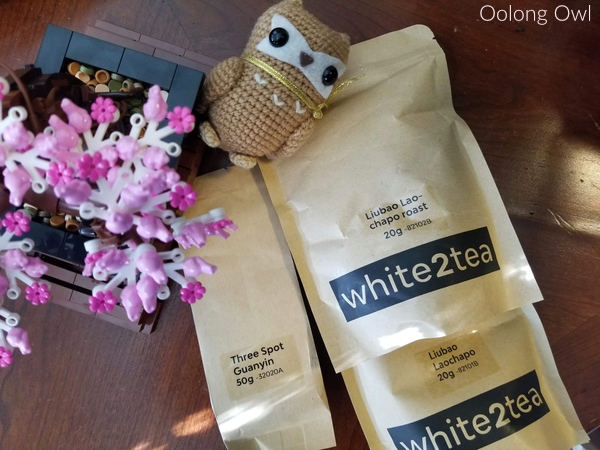
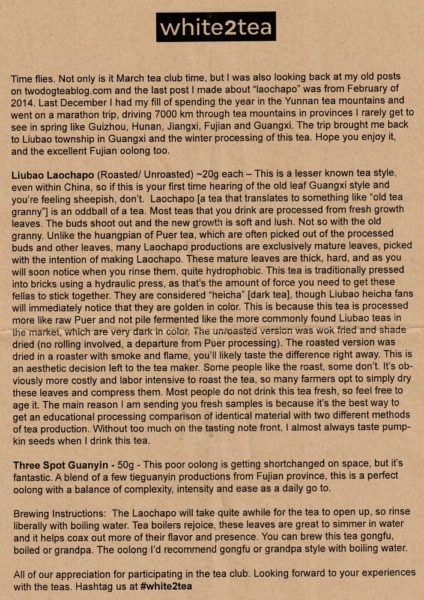
Three Spot Guanyin
This Fujian Tieguanyin has a honey roasted scent, pretty close to smelling like Cheerios.

I used around 1 gram of leaf per 15ml of vessel size, and after a boiling rinse, the leaves give off a fruity nutty scent.
Three Spot Guanyin has nutty milk, honey, and a bruised nectarine taste, with a floral aroma that takes over. After three infusions the Tieguanyin is quite magnolia floral with a balmy texture.
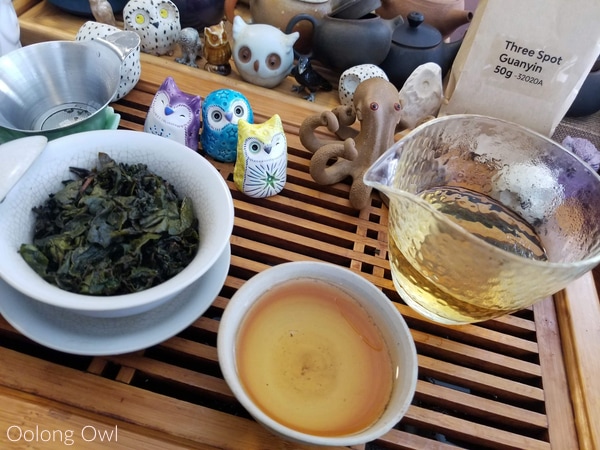
By the fifth infusions Three Spot Guanyin is a bit stewy, adding some sharp vegetal herbs, but still holds onto nutty honey notes. The aftertaste shifts to fresh cooling herbs. I got seven infusions total.
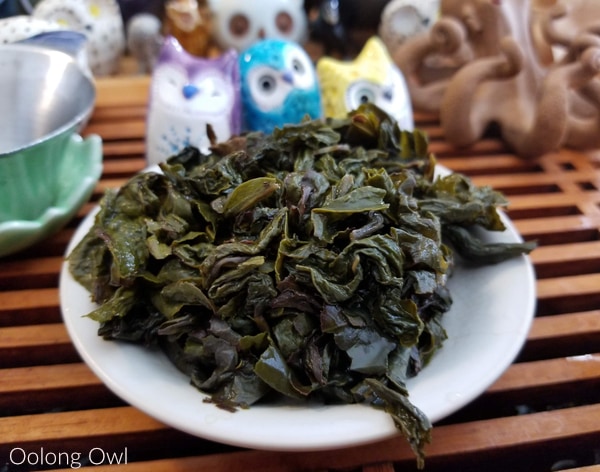
I quite enjoyed the complexity and aroma of the 2021 March White2tea club’s Three Spot Guanyin. This was a nice change of pace compared to the majority of Chinese Tieguanyins that are processed to be vibrant green.
2021 March White2tea Club Liubao Laochapo Comparison
Now here is the uncommon tea – Liubao Laochapo – an old growth tea intended for heicha, processed like sheng (not fermented) and the other roasted.
The leaves are thick and brittle, just like dried bay leaves. Unroasted Liubao Laochapo has a honey weedy scent, whereas the Roasted smells of smokey pine needles like a Lapsang Souchong.
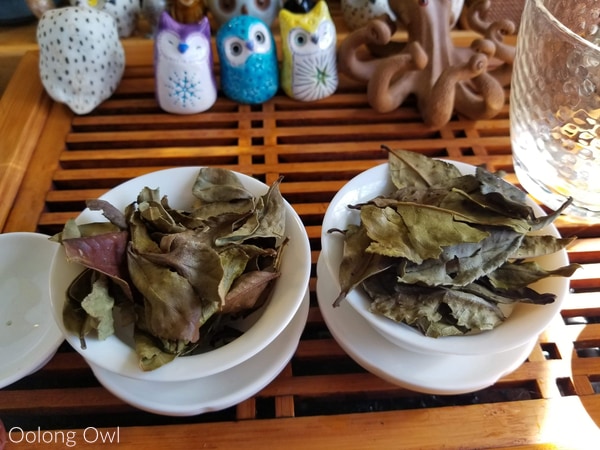
I tend to overleaf my heichas to compensate for sticks but these leaves are so huge, 1g/15ml gongfu ratio filled the gaiwan.
Both Liubao Laochapo has quite a watery profile and start off very light, despite a generous long rinse. Anyone walking in on this tea session would think I’m drinking bay leaves.

Unroasted Liubao Laochapo is sweet honey dust and twigs with a hint of weedy dandelion flowers.
Roasted Liubao Laochapo is not as smokey as it smells. The flavor is a little astringent pine plywood with an incense smoke at the end. Once past the first couple infusions, the Liubao tones down the woody and settles into a sweet pine.
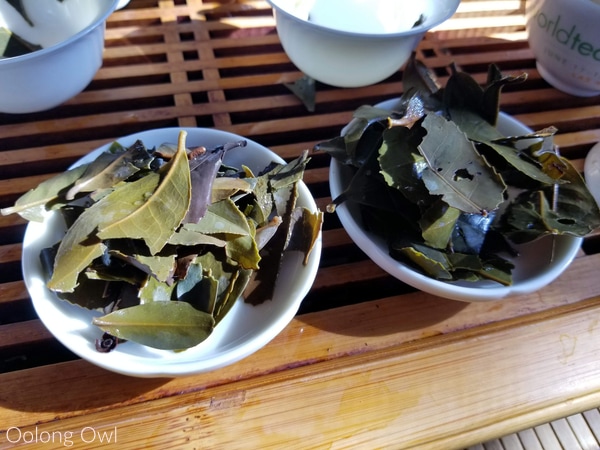
I found the Unroasted Liubao Laochapo very much tastes similar to a young, low ferment fu zhuan with the greener honey notes. Both teas resteep very well, I actually lost count but I got at least eight infusions. In addition, both teas were fairly consistent tasting with each infusion, making it a bit boring of a gongfu session. Either way, both Liubao Laochapo resteeped well, didn’t get too dry or bitter, and educational teas.






